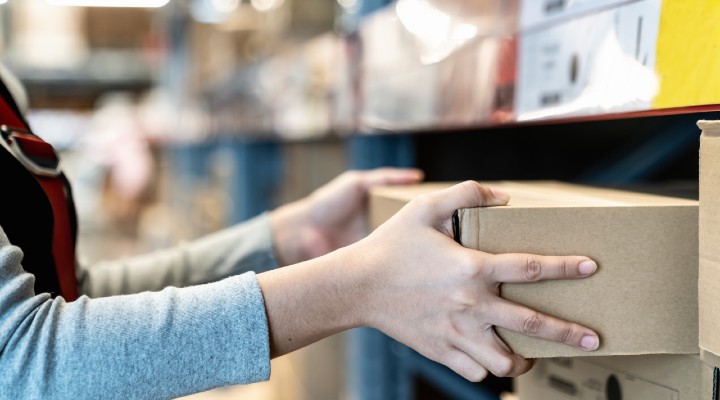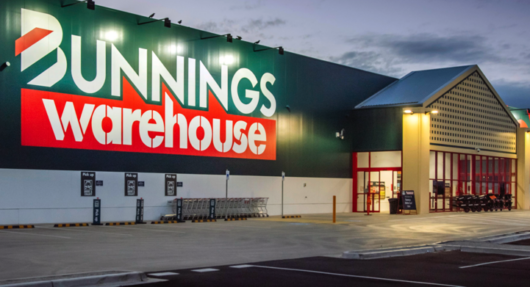Fulfilment is a dry topic in the world of e-commerce and from a retailer’s perspective, it can feel somewhat disconnected from the customer, which is why its importance in the success in online retail is often overlooked.
Effective fulfilment is a critical step in the customer journey, and one where meeting the client’s expectations is make or break in determining whether they become a repeat customer.
How many times have you waited day after day becoming increasingly frustrated as retailers delivery, service delivery agreements (SLAs) slip into the past? Or experienced the initial excitement of receiving a parcel, only to find it has been partially fulfilled with no messaging?
One thing is for sure, experience any of these issues and the likelihood of shopping online with the retailer again becomes very slim.
A report by Digital Commerce 360 captures this importance to the customer:
“Thirty-nine per cent of online shoppers say they want retailers to deliver online orders faster.
“In fact, it was the most-cited change retailers could make that would induce them to buy more online.”
Beyond the customer-facing benefits, effective fulfilment can drive significant cost saving. These include reduced staff costs from efficient picking, reduced packaging costs by using suitable products, reduced freight costs from routing orders effectively, minimising split deliveries, and automating freight manifesting.
Despite the clear business benefits, the Covid-induced demand surge has exposed fulfilment as the next big bottleneck for even the most experienced e-commerce players.
New York Times reporter John Herrman describes the issues at Amazon as follows:
“For many shoppers, it was the first place to turn, but demand for certain items was overwhelming the company’s ability to fulfil orders, not just for panic buyers but in general.”
Although the problem was exacerbated by Covid-driven demand, the underlying challenges that come with single order fulfilment have existed since online retail began gaining momentum in the early 2000s.
Prior to the rise of e-commerce, with the exception of a few successful mail-order businesses, logistics was primarily about bulk replenishment delivered into the retail network.
These orders were put together in a controlled warehouse environment, and delivered with less lead-time pressure, to a relatively small set of fixed addresses.
Compare this scenario to picking single items, from an active retail environment, to ship to new and dispersed locations, with shorter lead-times.
This inherent complexity is then coupled with increasingly sophisticated customer expectations – click-and-collect, evening or weekend delivery, gift wrapping, the list goes on.
There are layers of hidden complexity and many considerations when improving the fulfilment channel and it is certainly not one size fits all: product breadth and depth, geography, store network, product characteristics, customer characteristics, and of course, scale and seasonality, all play a part in determining the optimal approach.
Regardless of the operating environment, there are three areas to focus on to design a successful fulfilment model – process, technology, people.
Process
Some of the process considerations include (but are not limited to) in-store fulfilment vs distribution centre (DC) fulfilment.
DC fulfilment will usually have lower pick costs (automation, minimised walk distance, clear bin locations, orderly pick face, improved stock integrity), whereas in-store fulfilment leverages existing stocks, improves proximity to customer, and can drive improved in-store discipline.
A combination of the two can work to serve differing population densities.
Pick strategy
Pick by order is usually inefficient in all but very smaller-scale situations, batch picking minimises walk-and-pick time, but requires orders to be consolidated prior to packing, cluster picking works well when the products are relatively small and the technology supports it.
Packing environment
The physical space of the packing environment is a critical determinant of ability to scale.
Is there space for pick trolleys to queue without interrupting walkways? Are order consolidation bins required and how many? Is there a designated area for bulky items? Are packing materials in easy reach? Are label printers well placed?
Technology
Some of the technology considerations include (but are not limited to):
Order routing
If you are fulfilling orders from multiple locations, many variables need to be considered when deciding where to send the order – proximity to customer, stock availability/minimise split orders, available capacity of fulfilment location/load balancing, click and collect etc.
The technology being used should evaluate the data and make the best routing decision given trade-offs on the variables.
Stock integrity
Systems and integrations between systems should be as timely as possible to maintain stock integrity.
Stock levels should be checked on product detail and again through the checkout.
If stock is shared between in-store and online, POS systems need to communicate sales as frequently as possible.
Automation
Where scale warrants, there is almost no limit when it comes to automation options in a DC environment.
These include goods-to-person which bring items to an operator for an action (e.g. packing), sortation systems, and pick-to-light, where no physical or digital picklist is required and instead light indicators on each storage unit determine what needs to be picked.
There are myriad options, but generally very high volume is required to warrant the investment.
People
Some of the people considerations include (but are not limited to):
Incentives
It is important to align incentives across the business to support the online channel.
If you are using in-store fulfilment, then store managers’ incentives need to align with online, otherwise in-store activity will always be prioritised over eCommerce fulfilment.
Specialisation
Specialising staff in a portion of the fulfilment process (e.g. dedicated pick staff or pack staff) has the advantage of deep expertise in a single area and the resultant efficiency.
However, it does reduce rostering flexibility, and further to that, staff that have a holistic view of the process will often provide the best insights into process improvement.
Visibility
Fulfilment performance needs to be visible to the staff on the ground, not just managers.
Consider dashboards in the picking area showing real time performance by presenting both queues, and throughput.
Gamify by showing the scores of the top five fulfilment locations.
These considerations are not intended to be exhaustive but to illustrate the complexity involved in designing and implementing an effective e-commerce fulfilment model.
Whether customer retention, or cost management is the primary driver in your business, it is clear that the investment in expertise, time, and technology, to ensure that your fulfilment processes scale to meet and exceed customer expectation is quickly becoming a prerequisite to be competitive online.
It is time to put your e-commerce fulfilment processes in the spotlight, because for your customers, it is already there.
For more information on how eStar can help your business, visit: www.estaronline.com






